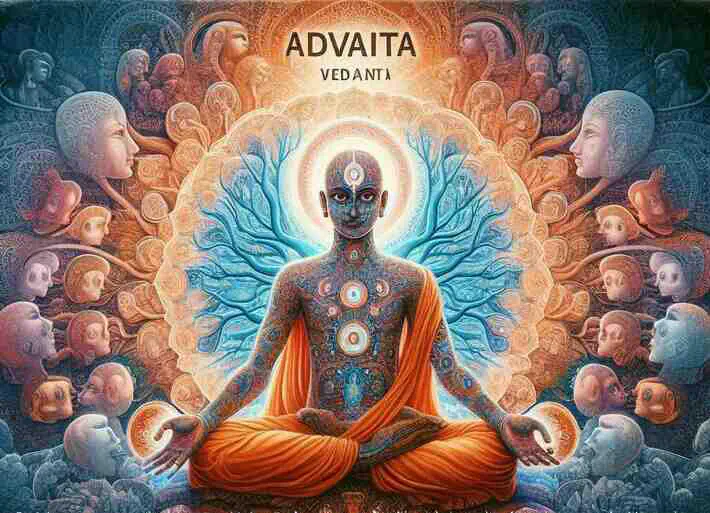Understanding Advaita Vedanta
My perspective and understanding of Advaita Vedanta
 Image credit: HTT
Image credit: HTTUnderstanding Advaita Vedanta: The Philosophy of Oneness
Advaita Vedanta, a profound school of Indian philosophy, centers around the realization of non-duality (Advaita) between the individual soul (jiva) and the ultimate reality (Brahman). Rooted in the teachings of the Upanishads, it emphasizes self-knowledge as the path to liberation (moksha). However, to comprehend its depth, one must first distinguish between traditional Vedanta and modern interpretations.
What is Vedanta?
Vedanta refers to the knowledge contained in the Upanishads, the final portion of the Vedas, India’s ancient scriptures. It explores the most desirable end for human beings (parama purushartha), which is moksha — liberation from limitations, sorrow, and the cycle of birth and death (samsara). The Upanishads unfold the knowledge that our true self (Atman) is identical to Brahman, the unchanging, eternal reality.
The Core Teaching: “Tat Tvam Asi”
The essence of Advaita Vedanta can be captured in the simple but profound phrase from the Chandogya Upanishad: “Tat Tvam Asi” or “That Thou Art.” This means that the individual self (Atman) is not separate from Brahman, the all-pervading reality. Realizing this truth leads to freedom from the limitations of individuality and duality.
Advaita Vedanta and Schools of Thought
Contrary to modern interpretations, Advaita Vedanta is not a school of thought in the conventional sense. A school of thought involves speculation, debates, and contentions that are subject to verification through perception or inference. Vedanta, however, is regarded as a “pramāṇa” or a valid means of knowledge, revealing the self through scriptural insights. It doesn’t present a theory for intellectual debate but a truth that one must realize through self-inquiry.
This is why Vedanta cannot be reduced to mere philosophy or be grouped with other schools like Samkhya or Vaisheshika. Its subject matter—Brahman and the self—is beyond the reach of the senses and the mind. As the Upanishads declare, Brahman is “not objectified by the mind, yet the mind knows because of it.”
The Role of the Guru
In Advaita Vedanta, the role of the teacher (guru) is crucial. The guru unfolds the teachings of the Upanishads using specific methods (prakriyas) to help the student grasp the non-dual reality. Unlike modern spiritual movements that promise experiences or altered states of consciousness, Advaita Vedanta is about understanding one’s true nature. There is no need for mystical practices to “experience” the self, because the self is ever-present, self-evident, and the essence of awareness.
Advaita Vedanta and Self-Knowledge
The central teaching of Advaita Vedanta is that the self is already free. Moksha is not something to be attained but something to be recognized. The limitations we experience are due to ignorance (avidya) of our true nature. Through Vedantic study and inquiry, one discovers that the self is pure awareness (chit), beyond the body, mind, and senses. This knowledge dispels ignorance, leading to the realization that “I am Brahman” (Aham Brahmasmi).
Advaita Vedanta offers a transformative vision: the individual conciousness and the ultimate reality are one. The journey it prescribes is not of accumulating new experiences or gaining external knowledge, but of uncovering the eternal truth within. By embracing this vision, one transcends the duality of the world and realizes the oneness of all existence giving an objective basis for equality and justice.